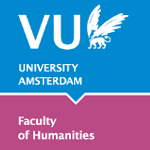
|
Digital Humanities Workbench |
Home page > Data collection > Interview InterviewThe interview is a research method that involves an interviewer asking one or more people questions. This can be done in an individual interview, but also as a group conversation or by working with so-called focus groups. An interview can be more or less structured, depending on the extent to which the topics and questions are fixed in advance. A fully structured interview (in which all questions are fixed in advance and completely worked out) could in some cases also be held as a survey.
Analysing interviewsIt is possible to use a computer to analyse interviews based on the digital audio/video recording of the interview or the transcriptions made of the interview.
Searching interviews with speech recognitionThere are many online oral history collections that can be searched by using speech recognition. One example is the Radio Oranje project. By using speech recognition technology, you can search the speeches of H.R.M. Queen Wilhelmina that were broadcast by Radio Oranje during World War II.Speech recognition-based technology allows researchers to specify a search term in order to find relevant clips in the interviews (or speeches, radio archives and television archives). Typically, these clips will include transcripts generated by speech recognition and (semi-)automatically generated summaries. In some cases, it is also possible to annotate the search results.
Transcribing interviewsIn order to facilitate the analysis of interviews, it is highly recommended to convert the recordings into text files. This process is called transcription. For digital transcription tools, see the page about transcription of speech.
Transcript analysisAlthough speech recognition is effective when it comes to searching through interviews, the possibilities are limited. Concordance programs have excellent functionality for searching and analysing larger files or multiple interviews (a so-called corpus). This software allows you to create word frequency lists based on transcriptions to help increase understanding of the idiom used in the interviews, which subjects are discussed and when they are discussed in various interviews.A collection of transcribed interviews can be considered a corpus, which can by analysed systematically by using various text analysis techniques. It can be useful to annotate the transcripts (see the pages about formal annotation and free annotation), by indicating who is speaking (structure and metadata), but also by highlighting certain concepts (content). This makes more extensive and more detailed analysis possible. XML is often used for this type of annotation. Programs such as Wordsmith can be used to explore XML-coded files. It is also possible to annotate video recordings of interviews (in stead of the transcripts), for example with a program like Atlas.ti. |
Other topics in this section: Introduction Digital archives Corpus compilation Survey Experiment Field work Data management |

 The interview is a central component of
The interview is a central component of